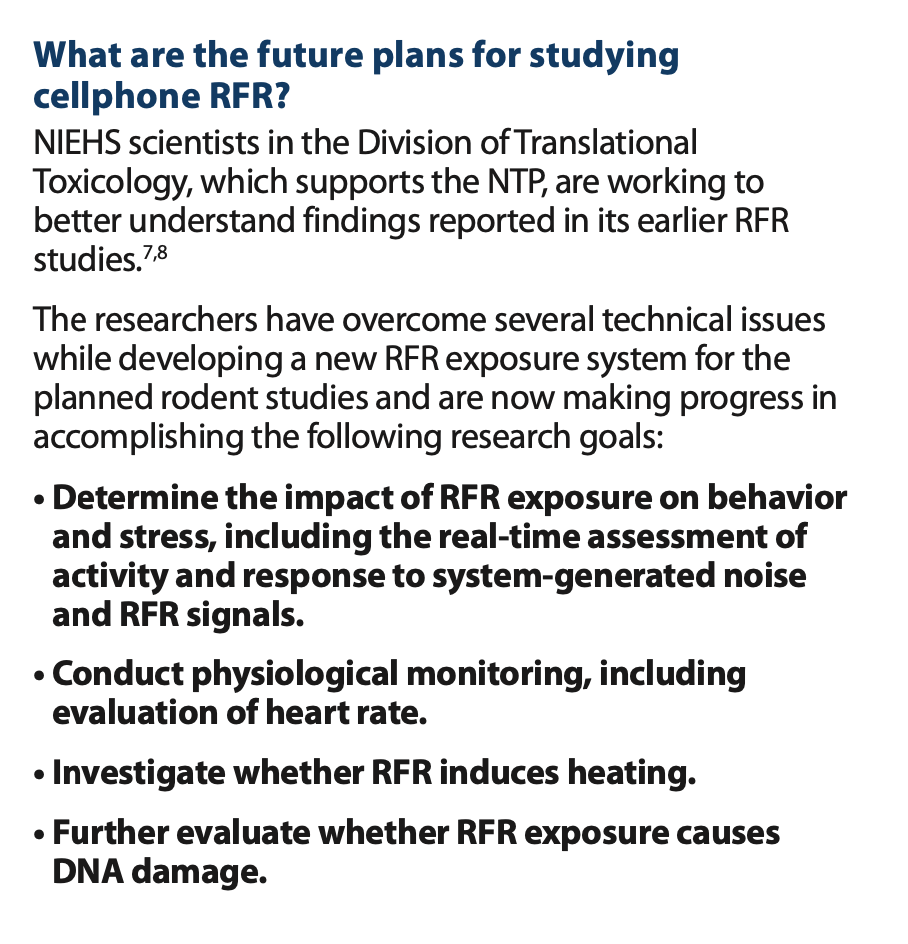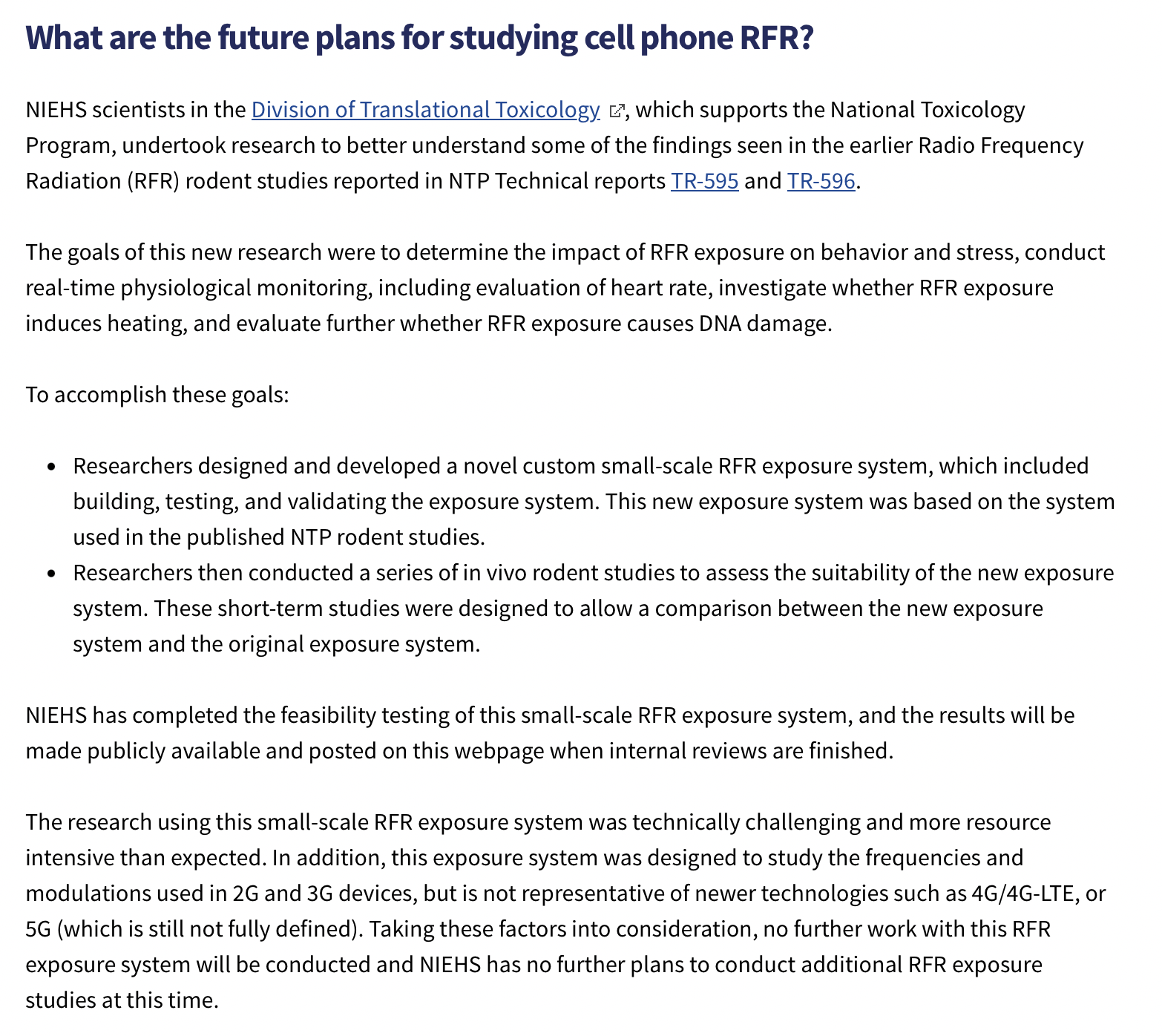Microwave News: US NTP Quits RF Studies
Feb 12th 2024
Microwave News, February 2, 2024
The U.S. National Toxicology Program (NTP) has closed down its RF radiation research program. Indeed, it appears that work effectively stopped some time ago.
In September 2019, the NTP announced a new project designed to explain how RF radiation causes cancer. It was a year after the NTP made international headlines with its $30 million study showing “clear evidence” that RF caused malignant tumors in rats.
The NTP ordered and received new, smaller exposure chambers, which, like the original ones, were designed to irradiate animals with 2G and 3G signals. Work was believed to be under way. We’re “optimistic” that we can detect changes in gene expression and identify biomarkers of RF effects, Michael Wyde, the lead NTP investigator, told Microwave News at the time.
Now, close to four-and-a-half years later, it turns out that none of those experiments to explore mechanisms of cancer causation were ever carried out.
For the first time in more than 50 years, U.S. civilian agencies have no ongoing research on the health effects of non-ionizing electromagnetic radiation.
“No Additional RFR Studies Are Planned”
Word of NTP’s change of plans has dribbled out slowly.
A few weeks ago, the NTP quietly posted an updated Fact Sheet on cell phone radiation revealing that it would stop all RF research. The agency explained that, in the course of testing the feasibility of the new exposure systems, NTP had found the work to be “technically challenging” and “resource-intensive.”
Here’s the key part of the January 2024 update:

When Microwave News
attempted to follow up with some questions, NTP’s Office of
Communications and Public Liaison went silent for close to two weeks.
Then, Robin Mackar in the press office responded with an email stating
that the project had never progressed beyond the feasibility studies
with the small exposure chambers —which had been delivered to North
Carolina close to five years ago.
“Anything that will get published will be from the ‘feasibility studies’,” Mackar wrote.
This stands in contrast to what the NTP said last year. Here’s what the February 2023 RF Fact Sheet stated:
It is not clear what the NTP meant by “making progress” in achieving its research goals. The January 2024 Fact Sheet is the first update since then.
Here is the full statement on NTP’s future plans, which was posted on its website a few days ago:
Both the original exposure chambers and the smaller ones were designed and built by the IT’IS Foundation in Zurich. In an email exchange, Niels Kuster, the director of IT’IS, said that upgrading the small chambers for exposures to 4G and 5G radiation would be “very cheap.”
Much of the NTP’s work is administered by the NIEHS staff at the agency’s campus in Research Triangle Park, NC.
__________________
Devra Davis, the president of the Environmental Health Trust, decries what she calls NTP’s “sudden and inexplicable turnaround” in a commentary, “Why Did NIH Abruptly Halt Research on the Harms of Cell Phone Radiation?” published by The Hill, a DC newspaper.
For some background on NIEHS/NTP see “Will NIEHS Ever ‘Get’ EMFs?” from MWN, January 2020.



